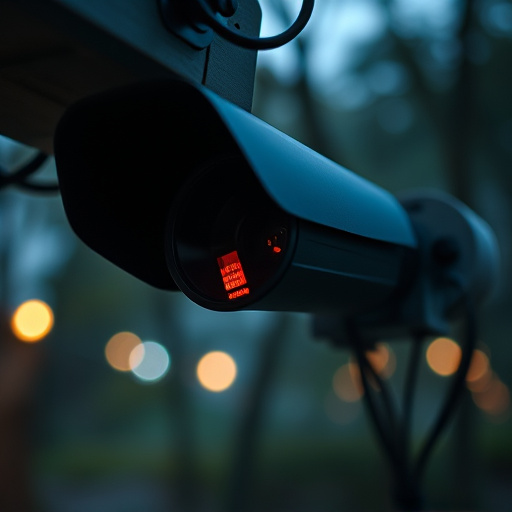Light reflection analysis is a powerful tool for detecting micro cameras used for covert surveillance in child protection scenarios. By studying subtle light patterns and reflections off surfaces near suspected spy cameras, individuals can uncover hidden gadgets. This non-invasive method enhances safety measures, allowing parents and caregivers to strategically reflect light to detect potential hidden cameras, thereby ensuring a secure environment for children.
Unveiling hidden spy cameras has become a paramount concern in today’s digital age, especially for parents seeking to protect their children. This article delves into an innovative technique leveraging light reflection to detect micro cameras, a powerful tool for child safety. We explore the science behind visualizing these hidden devices and non-invasive methods to uncover them without causing damage. Additionally, we discuss advanced reflection techniques aimed at safeguarding privacy in the face of persistent surveillance threats.
- Understanding Light Reflection for Spy Camera Detection
- Micro Cameras: A Parent's Tool for Child Safety
- The Science Behind Visualizing Hidden Devices
- Non-Invasive Methods to Uncover Hidden Spycams
- Protecting Privacy: Advanced Reflection Techniques
Understanding Light Reflection for Spy Camera Detection
Understanding Light Reflection is key in detecting micro cameras, especially those used for covert surveillance like Child Protection. These tiny devices often mimic everyday objects and rely on subtle light manipulation to remain hidden. By analyzing how light reflects off surfaces near suspected spy cameras, individuals can uncover these hidden gadgets. This technique leverages the principles of optics, where small variations in reflection patterns can indicate the presence of a camera lens or sensor.
In scenarios involving Micro Cameras for Child Protection, reflecting light from strategic angles can help parents and caregivers identify potential hidden cameras in their children’s rooms or play areas. This proactive approach to surveillance enhances safety measures and ensures a more secure environment. By understanding how light interacts with different surfaces, one can develop effective strategies to detect and counter such sophisticated spy camera technology.
Micro Cameras: A Parent's Tool for Child Safety
Micro cameras, often referred to as hidden or spy cameras, have emerged as a powerful tool for parents seeking to ensure their child’s safety. These tiny yet advanced devices can be discreetly placed in various settings, from playrooms and classrooms to dormitories and common areas, allowing parents to remotely monitor activities. With the ability to capture high-definition video and audio, micro cameras provide valuable insights into their child’s environment, fostering a sense of security.
By employing light reflection techniques to detect these hidden devices, parents can take proactive measures to protect their children from potential hazards or inappropriate behaviors. This innovative approach enables them to identify micro cameras in hard-to-reach places, ensuring that privacy is not compromised at the expense of child protection. With such tools at their disposal, parents can rest easier knowing they are actively safeguarding their offspring in a world where technology and privacy often collide.
The Science Behind Visualizing Hidden Devices
The science behind detecting hidden devices, such as micro cameras used for child protection, involves an intricate interplay of light and reflection. This technique leverages the fact that most digital devices emit or reflect light in unique patterns, which can be analyzed to identify their presence. By shining a specific wavelength of light onto potential hiding spots, whether in homes, schools, or public spaces, any attached micro cameras will cast distinct shadows or reflections on surrounding surfaces.
These visual cues are then meticulously examined, allowing security professionals to pinpoint the exact location of the hidden device. This method is particularly effective for micro cameras, which often have miniature lenses and are designed to be nearly invisible to the naked eye. By understanding the behavior of light and its interaction with these devices, experts can uncover hidden threats, ensuring safer environments for children and vulnerable individuals.
Non-Invasive Methods to Uncover Hidden Spycams
Uncovering hidden spycams, especially in sensitive areas like homes and schools, has become a priority for privacy and safety. While invasive searches can be intrusive, non-invasive methods are gaining popularity as effective solutions. One innovative technique leverages light reflection to detect micro cameras for child protection. This method involves strategically placing bright lights or reflective surfaces that bounce light off suspected camera lenses, making their presence visible.
By analyzing the reflected light patterns and any anomalies, experts can identify hidden recording devices without physically disturbing the area. This approach is particularly useful in educational institutions where surveillance is a concern but complete disruption of daily activities must be avoided. Non-invasive detection techniques offer a balance between privacy preservation and child safety by empowering authorities to take proactive measures against potential threats using tools like micro cameras.
Protecting Privacy: Advanced Reflection Techniques
In today’s digital era, privacy has become a significant concern, especially with the prevalence of micro cameras hidden in everyday objects for surveillance purposes. One innovative technique to counter this threat is through light reflection analysis. By studying how light reflects off surfaces, security experts can detect unusual patterns indicative of covert filming devices. This method is particularly valuable in child protection scenarios where parents and guardians want to ensure their kids’ privacy and safety from potential hidden cameras.
Advanced reflection techniques allow for more subtle and precise detection, going beyond traditional methods. It involves analyzing variations in light intensity, angle, and color, enabling professionals to identify micro cameras embedded in everyday items like toys or furniture. This proactive approach not only safeguards individuals but also fosters a sense of security and peace of mind, knowing that sophisticated privacy protection measures are in place.
The detection of micro cameras using light reflection techniques offers a powerful non-invasive method for ensuring privacy, particularly in safeguarding children. By understanding how light interacts with these hidden devices, parents can employ advanced reflection strategies to uncover potential threats. This approach equips them with an essential tool for child protection, enabling a safer digital environment while promoting awareness of personal privacy.
